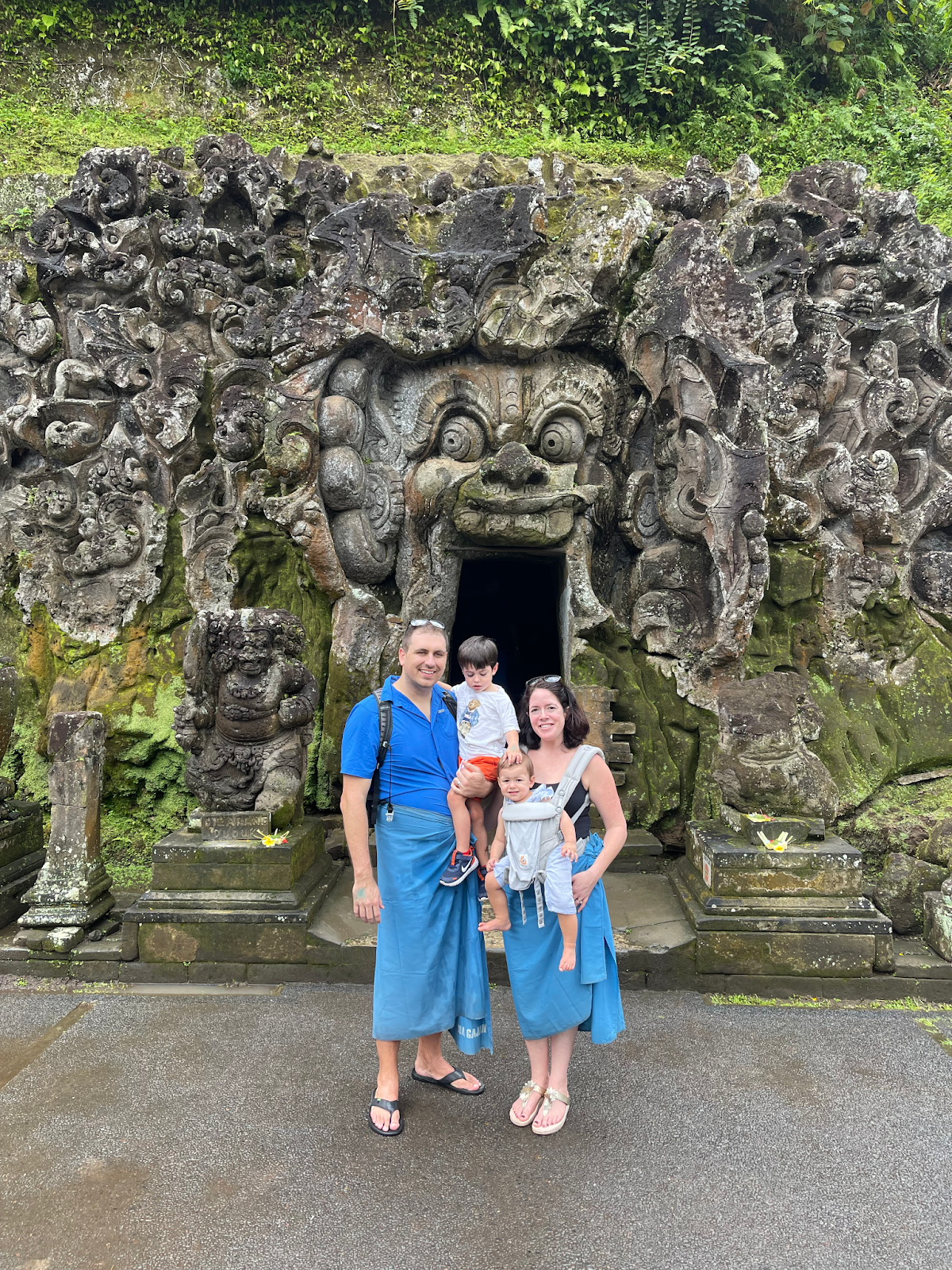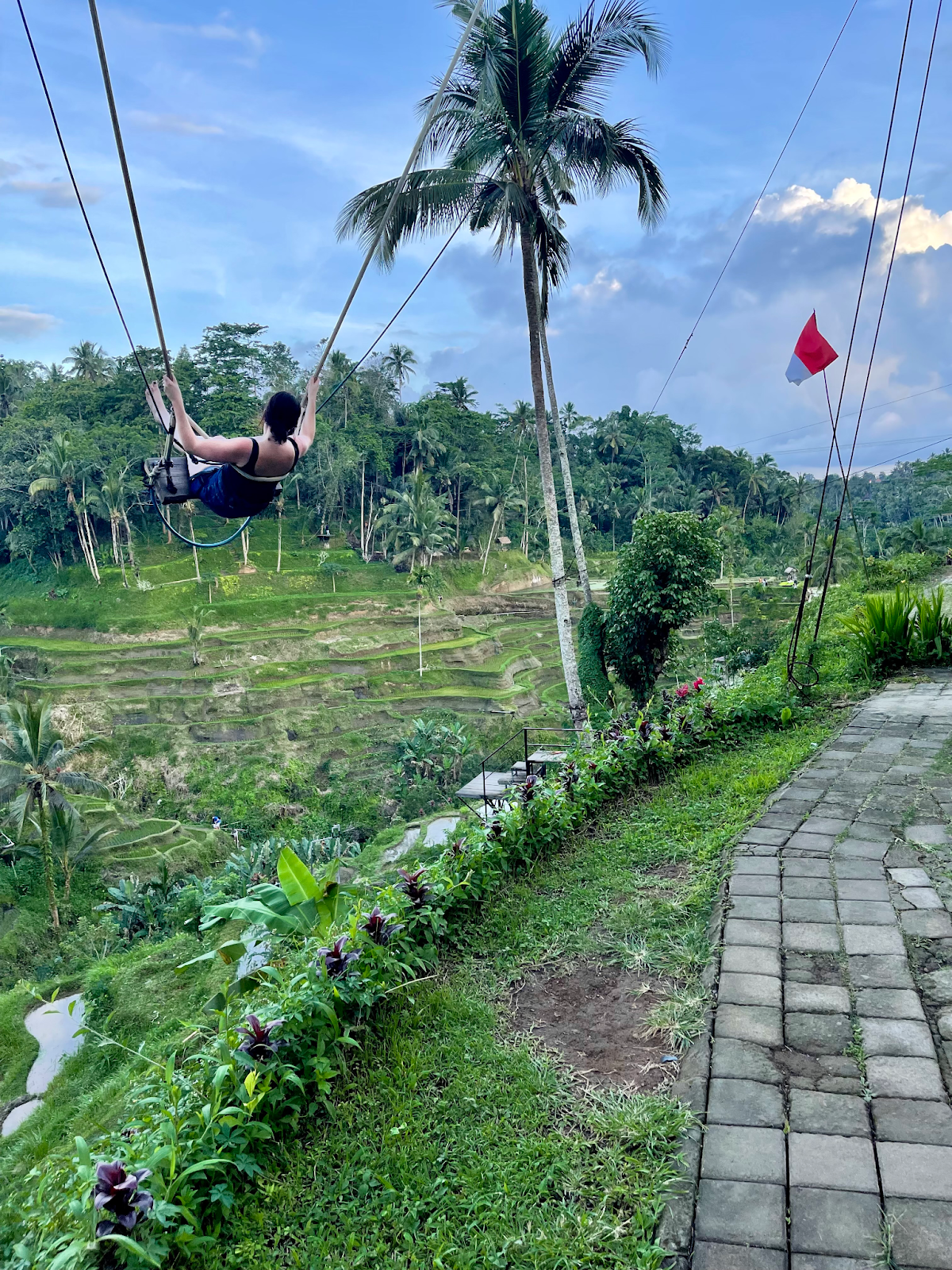So, we decided to go to Bali for a family holiday - the first time out of the Philippines for more than two years! But what do you do there? This is the question I asked my friends when they said, 'you really don’t go to the beach'. Once I started my research, I found there was SO much to do on this 5,780 square kilometer island.
During our 8 night stay we were going to see and do some exciting things, and I'd managed to find something for everyone; me, my husband, my two toddlers (ages 3 and 1), and mother.
Day 1 - The direct flights from Manila to Denpasar are not at the most convenient times with children. On AirAsia, we arrived a little after 1 am because of delays. We opted to go straight to our Villa instead of staying by the airport the first night.
Tip: Depending on how much you spend on booking.com they may include airport transfer for you.
One of the deciding factors for choosing Bali for this trip was because it was affordable to stay. Instead of booking 3 - 4 hotel rooms, we could book a 4-bedroom villa for under 4M IDR (around 15,000 php) per night.


Day 2 - Because we got in so late, we made sure to not book any tours the next morning. We spent this day exploring Ubud in the city center. I was so mesmerized by all the temples, there are over 10,000 Hindu Temples in Bali! This one is the Saraswati Temple and is known for its stunning lotus pond.

Also, walking distance from our villa in the city center was the Sacred Monkey Forest Sanctuary. Like most places in Bali, it was remarkable because of the sweeping trees and temples. This was not the most relaxing place with children! I would skip this one if you have toddler age children.
Tip: You are stepping foot into the monkey’s home, so make sure not take in any food or drinks. And pay attention to your belongings, it is fair game for the monkeys!

For dinner we decided to try a place in the Rice Terrace. I LOVED this spot, the super chill vibe during sunset was exactly what I needed post Monkey Forest. I highly recommend the Sweet Orange Warung. The word “warring” you will see everywhere. It means family-owned cafe, retail shop or restaurant. Their food was delicious, especially the Tempeh!

Tip: The local beer, Bintang is a pale lager and delicious! Perfect for watching the sunset over the rice terraces.
Day 3 - In Bali it is very affordable to rent a driver for the day. We spent around 500 - 600 K Indonesian Rupiah (IDR) per day (a little over 2,000 php) for 8 hours of sightseeing.
The first stop on Day 3 was this Tegenungan Waterfall. It was a quick hike down to see this gorgeous fall. Unfortunately, it's too rough to swim in, however, there are a lot of cute photo spots along the way down.


Second stop was Goa Gajah or the Elephant Cave. This site has a Hindu Temple and Buddhist Temple within one area. It was another stunningly gorgeous spot. There are a few tour guides around the temple. We paid 150,000 IDR (500 php) for a tour of the space, however, I am sure you can talk them down more.

Tip: Vendors will try to sell you a sarong in the parking lot, however, it is included in the ticket price.
Onto the water temple, Pura Tirta Empul. We found a guide here that was inexpensive at 100,000 IDR. He walked us through the whole temple and then we opted for the Purification Ritual in the holy water. I really enjoyed this meditation and cleanse, super unique experience.

Since we were close by, we made a stop at a coffee plantation. The plantation itself was very beautiful and it was interesting to see what they grew there besides coffee. The coffee and tea sampler you see in the photo was free, however, to try the Luwak coffee it cost 50,000 IDR. It was actually delicious, just try not to think about how they make it (using feces of a civet (cat)).

Next stop was the Tegallalang Rice Terrace, one of the most famous for its beauty. Great place for a hike, photos or to try one of their famous jungle swings.


That evening for dinner we went to a really yummy Italian restaurant for pizza and pasta called La Baracca Bali. Delicious and quick service!
Day 4 - By day 4 we felt like we needed a few kid friendly activities. We started off at a really cute breakfast spot called Shamana Mama Restaurant complete with a playroom! It was fabulous because the kids had something to do while waiting for their breakfast. Their babyccino was loaded with marshmallows, it received five stars from my son.


Next, we were onto Bali Zoo. Such an amazing place for the children! You get to be up close and feeding most of the animals. We fed deer, meerkats and even the elephants! The elephants were huge but the most gentle creatures, definitely one of the highlights of the trip.


Afterwards for some R&R we headed to Soulshine Bali for their Wellness Wednesday Yoga. For 200,000 IDR you get a 90-minute vibrational vinyasa flow session plus a food and beverage credit of 50,000 IDR. This place was recommended by a friend and is stunning! Their resort is brand new and their service was excellent. They even have a fun swing in the pool.
Apologies, I did not get any photos at yoga! The class was the perfect mix of stretching, strength training and relaxation with views of the rice terraces and a soothing live cello playing in the background.

Day 5 - Before leaving Ubud we checked out the Campuhan Ridge Walk. The trail was lush and green. We stopped at a warung for a coffee break to take in the view and get out of the rain. Thankfully we did not bring the kiddos along with us for this walk. However, on a sunny day it would be child friendly as the hike is paved.


On Day 5 we said goodbye to our Ubud villa and were off to the coast. We took a detour we decided to get a driver for the day and stop at Sanur. I highly recommend the Byrd House Bali. It was situated right on the beach with playground for the kids and loads of pools. For 200,000 IDR consumable per person at the restaurant you can enjoy all of the amenities. Sanur beach was calm, however, there are a lot of large stones and rocks when heading into the water.
Later we checked into another AirBnb villa in Legian, between Kuta and Seminyak beaches. The villa itself was gorgeous, another 4 bedroom with private pool and outdoor living space for4M IDR (around 15,000 php) per night. However, it boasted being able to walk to the beach. You can certainly walk to the beach, however, the roads were way too narrow making the most unpleasurable walk. I would spend more to stay closer to the beach in the Seminyak area.
Sunsets are so pretty on Bali's coast.

Day 6 - By this time we really needed a day of R&R. We spent most of the day poolside at the villa relaxing, practicing yoga and drinking Bintang.
That evening we had tacos at a really bright and lively restaurant called Motel Mexicola. Food and drinks came out super fast. The place was so colorful and had so many cool details, the kids were entertained.
Day 7 - A place on my Bali bucket list was Uluwatu, I knew I couldn’t leave before going there. This area is very cliffy and known for amazing surf and gorgeous views. While we don’t surf, we wanted to spend some time at the beach in the morning and did not want it to be a huge trek to get there (there are a lot of fantastic beaches, but it is a very steep hike down). We wound up at Dreamland Beach. The waves were massive, but it was very entertaining watching the surfers catch waves.

For Lunch we headed to Single Finn Bali. The views here were fantastic, another great spot to watch surfing. If you are consuming food and beverages at the restaurant, you are able to use their pool as well.

After lunch we headed to the Uluwatu Temple. The views from the temple were magnificent overlooking the water. We stayed for the Kecak Fire Dance, it is a must see!
Tip: To save you time, have your driver stand in line for the fire show starting at 4:00 pm for the 6:00 pm show. It is known to sellout, especially the sunset show (6:00 pm).


Day 8 - As we got near the end of the trip, we realized we needed to try out the beach clubs. One of the oldest is in Seminyak - KU DE TA. They host a family day every Sunday with arts and crafts and face painting. Even though their pool is small, it was a nice atmosphere here on Sunday for families.


That evening we went to watch the F1 race at the Y Sports Bar in Legain. Because of the number of Australian Tourists, there was no lack of sports pubs - my husband was very pleased!
Day 9 - The direct flight back to Manila departs Bali at almost midnight. We had two options, either pay for an additional night to stay in the villa longer or book a driver for the day. We chose the latter and went to Finn’s Beach Club in Canggu. For a consumable amount of a little over 1M IDR (for booth setup) we were able to enjoy the amenities here. This Beach Club was beyond amazing, and the sushi was divine.
Tip: Finn’s got super crowded in the afternoon even on a Monday, come early to avoid crowds.

Lastly, for dinner we headed to Jimbaran Beach. This area is located very close to the airport, only about 10 minutes away. There are tons of restaurants offering dinner along the beach. This whole setup was a tad tourist trappy, but it was all in good fun and a nice way to end the trip!


Tip: Currently, the Philippines is requiring you to fill out a One Health form to return to the country. Make sure you have this done and ready to go before you check-in for your flight.
Please feel free to contact me via the ANZA events email address - tickets@anzamanila.org if you have any more questions.